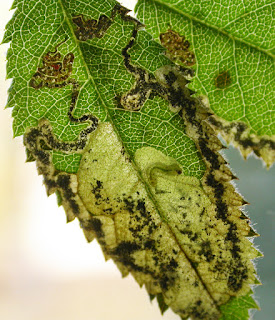Although not its best local site (which is probably in Oxfordshire near Henley-on-Thames), yesterday afternoon I went to some woodland near
Marlow which is the most reliable location for Plumed Prominent within Bucks. Active during November and December, this is a nationally scarce species which in our area survives within just a few Chiltern woodlands where there is a reasonable supply of field maple.
The weather conditions last night were fine for the moths which fly at this time of year (6C at dusk, 5C at 9pm when I packed up) and I came away with nine species:
Emmelina monodactyla, December Moth, Red-green Carpet, Spruce Carpet, November Moth agg, Feathered Thorn, Sprawler, Brick & Yellow-line Quaker. Of the target there was unfortunately no sign, suggesting that it may be a late year for it, so I'll probably try again next week. Persistence usually pays off at this site (for example, in 2014 it took me three chilly visits before I got just the one male!). My experience is that it flies from about 6pm onwards and if you haven't seen one by 8.30pm you might as well give up and try another day.
Of note amongst the adult moths were two of the seven Red-green Carpets caught, both of which were all-green females with no sign of red. Perhaps the most interesting record of the evening was actually a caterpillar, a young (17mm) larva of Clouded Magpie being found on wych elm. By this time of year it should be in the pupal stage which suggests that it was the off-spring of a second brood (see
this report on the blog from the same general area last year). Elms do tend to hang on to most of their leaves quite a bit longer than many other trees, but I would still have thought it unlikely that the caterpillar would survive to become fully grown before they fall.
 |
| Red-green Carpet female, 10th November |
 |
| Clouded Magpie caterpillar, 10th November |
Back home at
Westcott, the actinic light has been run from inside the conservatory for the past couple of nights, a spot that I often use until bedtime during the winter months especially if a frost is forecast. A check of the windows at midnight on Wednesday night produced a November Moth agg and four Winter Moths (my first of the season), while last night there was a pair of Feathered Thorns.
 |
| Winter Moth, Westcott 9th November |
Dave Wilton
Westcott, Bucks





















